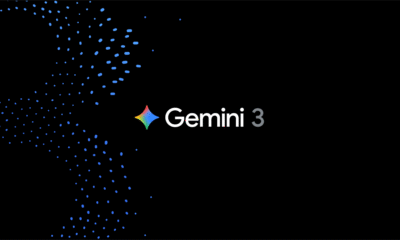Business
Google strengthens language capabilities to drive internet adoption in India
Google on Thursday said it is adding capabilities that will make it easier for people to get search results and navigate on Google Maps in additional Indian languages, and even learn how to solve math problems in Hindi. The addition of these features is part of Google’s effort to solve challenges around consumption, communication and creation of content in local Indian languages on the internet, Google India Country Head and Vice President Sanjay Gupta said during the Google L10n virtual event. “Even when India had less than 100 million users online, Google Search was accessible in at least 9 Indian languages. And over the years, we have worked hard to ensure that all our products are accessible and useful for the most popularly spoken Indian languages,” he said.
Gupta highlighted that India is witnessing a surge in internet usage from outside the big metro cities, and in the last two years, over 100 million new internet users have been added from rural India. Every new user coming online is an Indian language user, he said. The company has adopted a three-point strategy in this direction. “The first is investing in machine learning and artificial intelligence efforts to become better in language understanding at our research centre in India and make these technological advances we have made, accessible to everyone across the ecosystem. Next is to invest and deeply partner with innovative local startups who are building solutions to cater to the needs of Indians in local languages,” he said. Gupta added that the tech giant is also focussed on drastically improving the experience of its products and services for Indian language users. Previously, Google had enabled users in states with a significant Hindi-speaking population to flip between English and Hindi results for a search query on Google by introducing a simple ‘chip’ or tab they could tap to see results in their preferred language. Since the launch of this feature, Google said it has seen more than a 10X increase in Hindi queries in India.
Also read: Fintech Start-up GimBooks Introduces Indian Regional Languages on Its Accounting & Bookkeeping Platform
Google is now adding support for four additional Indian languages – Tamil, Telugu, Bengali and Marathi – leveraging which users will be able to toggle their search results between English and these languages. Over the next month, the search will also start to show relevant content in supported Indian languages where appropriate, even if the local language query is typed in English. This functionality, it said, will also better serve bilingual users who feel comfortable reading both English and an Indian language. It will roll out in five Indian languages – Hindi, Bengali, Marathi, Tamil and Telugu. Google noted that in India, more than 50 per cent of the content viewed on Google Discover is in Indian languages, and a third of Google Assistant users in India are using it in an Indian language. Since the launch of Assistant language picker, queries in Indian languages have doubled, Google said in a statement. The tech major is now extending this ability to Google Maps, where users can change their Maps experience into one of nine Indian languages that will allow them to search for places, get directions and navigation, and interact with the map in the chosen language. People will also be able to use Lens to snap a photo of a math problem and learn how to solve it on their own in Hindi or English. To do this, Lens first turns an image of a homework question into a query and based on the query, step-by-step guides and videos are provided to help explain the problem.
More people use Google Lens in India every month than in any other country worldwide. An example of its popularity is that over 3 billion words have been translated in India with Lens in 2020. The company also announced that a new approach called ‘Multilingual Representations for Indian Languages’ (or ‘MuRIL’) has been developed at Google Research India. MuRIL provides support for transliterated text such as when writing Hindi using Roman script (currently missing from previous models of its kind) among other benefits of this multilingual model that scales across languages. One of the many tasks MuRIL is good at is determining the sentiment of the sentence, Google said. For example, “Achha hua account bandh nahi hua” would previously be interpreted as having a negative meaning, but MuRIL correctly identifies this as a positive statement. It can also classify a person versus a place. For example, ‘Shirdi Ke Sai Baba’ would previously be interpreted as a place, which is wrong, but MuRIL correctly interprets it as a person, Google said. MuRIL currently supports 16 Indian languages as well as English — the highest coverage for Indian languages among any other publicly available model of its kind.









































